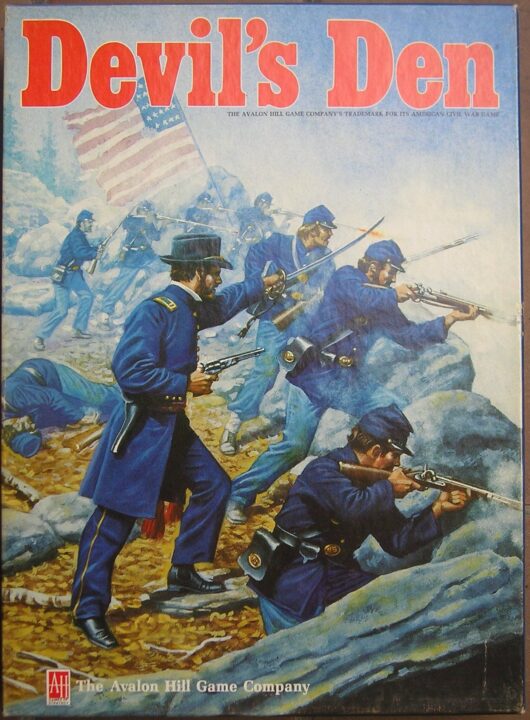If you’ve ever wanted to plot, scheme, and maybe betray your friends (all in good fun, of course), then you might be curious about Devil’s Den. I got my hands on this box of chaos and met up with my trusty game group for what turned into a night of laughter, fake alliances, and more than one dramatic table slap. In this review, I’ll spill all the goods—both the heavenly highs and the little devilish flaws—so you’ll know if this one deserves a spot on your shelf or if it belongs in the fiery pit of your board game closet.
How It Plays
Setting up
First, toss open the box and set up the board in the middle of the table. Hand each player their devilish character sheet, some action tokens, and a secret agenda card (try not to peek at others, or at least pretend you didn’t). Shuffle the deck of temptation cards and deal everyone three to start. Place the inferno markers in a pile nearby, ready to rain trouble.
Gameplay
Players take turns in clockwise order. Each turn, you’ll spend your precious action points to move around, play cards, unleash sneaky tricks, or backstab your pals (devilishly, of course). You can also attempt risky bargains at the Den’s center, which can help or ruin your day. Keep an eye on other players’ moves—they might be plotting something (they usually are). There’s a healthy dose of bluffing, scheming, and foiling your friends’ plans. And yes, the table will get loud.
Winning the game
The first player to complete their secret agenda—or cause all the other devils to lose theirs—wins and gets full bragging rights until next game night. If no one wins after the inferno deck runs out, whoever’s got the most points from completed actions cackles their way to victory. Easy, right? Not with my friends around.
Want to know more? Read our extensive strategy guide for Devil’s Den.
How Devil’s Den Keeps You Guessing: Gameplay Mechanics and Strategy Madness
If you have not played Devil’s Den yet, let me warn you: this game will fry your brain faster than my toaster fries my bagels. Devil’s Den has a rare mix of sneaky movement, area control, and a bit of card-driven chaos. Each player slips into the boots of either the defenders or attackers. As a defender, you guard your fort with as much paranoia as you’d guard the last slice of pizza at a party. Attackers, on the other hand, spend their time plotting—usually in whispers and snickers—while trying to sneak past your traps and guards.
I love that you don’t just plonk your pieces down and watch the dice decide your fate. Most turns in Devil’s Den are about bluffing, second-guessing, and sometimes plain old bad acting. I once watched my friend Rina try to fake confidence as an attacker and, like clockwork, led her squad right into my very obvious ambush. Sorry, Rina. There’s also a cool action-points system, so you can’t just run around willy-nilly. You have to budget moves, keeping in mind tricky cards that can break the rules—sometimes in your favor, sometimes not.
Now, about those cards: they’re spicy. Some give minor boosts, while a few rare ones flip the game on its head. My only gripe here: sometimes (rare, but it happens) you win or lose because someone drew that one killer card at the right/wrong moment. It’s not enough to ruin the fun, but it gives a tiny edge to randomness. Still, for the most part, winning comes down to reading your friends and guessing their moves, not just good luck or bad luck.
If you want to know how those mind games play out when real people try to outsmart each other, wait till you see my thoughts on player interaction and fairness—it gets wild.
How Does Devil’s Den Bring Players Together (or Tear Them Apart)?
Let’s be honest here: the main reason my friend group survives is because of games like Devil’s Den. There’s just something magical about watching Tim and Alex argue, bargain, and fake-cry their way through a session. This game is basically a masterclass in pushing people’s buttons (in a fun way, mostly). You need to scheme, form alliances, and then betray those alliances, all before the snacks run out.
When it comes to fairness, Devil’s Den is a mixed bag. The player interaction is spicy and gives everyone a real shot at winning—if you keep your wits sharp and your poker face sharper. No one just sits back twiddling their thumbs, which I love. The game always gives you things to do, so you’re never left feeling pointless or bored. However, sometimes one bad decision (or one sneaky backstab) can set you back, and there’s not always a way to recover. If you’re sensitive about being targeted, this game might test your friendship threshold.
Devil’s Den does a decent job at balancing power between players. The designers made sure that the sneakiest player doesn’t always win, but neither does the loudest complainer (sorry, Steve). The game’s fairness partly depends on the crowd you’re playing with, though—if your friends are ruthless, prepare for chaos! I give it a solid three out of five for balance. It’s fun, but sometimes the negative interactions and ganging up can feel a little much.
Next up, grab some sunglasses—because we’re about to check out the dazzling world of Devil’s Den component quality and artwork!
Component Quality and Artwork in Devil’s Den: Devilishly Delightful or Design Disaster?
Alright, so let’s talk about the bits and bobs you get when you open up Devil’s Den. First off, the box itself. It’s sturdy enough to survive an accidental drop that may or may not have happened when my cat decided to test gravity. The cards have a nice finish—smooth to shuffle yet not so slippery that they end up in every corner of your house. The tokens and standees have actual weight to them, which I appreciate. Nothing feels cheaper than a token that’s basically a cereal box cutout. This is not one of those games!
What really sells Devil’s Den for me is the artwork. Each card oozes with spooky style, and the colors are bold enough to impress even my color-blind friend Kevin (who mostly just complimented the red, but still, that’s something). The artists went above and beyond; every demon, every lair, and even the dreaded Hellhound have unique little touches. I caught myself just staring at the board during someone else’s turn, appreciating all the little details I missed on first glance.
If I had to nitpick, some of the iconography is a tad small—if you play with someone who insists on sitting at the other end of the table, expect a lot of squinting and dramatic arm extensions. But that’s pretty minor in the grand scheme, and honestly, no one here needed more excuses for dramatic gestures anyway.
Now, as for whether your fate in Devil’s Den is decided by skill or by the malice of the dice gods… well, brace yourself for a wild ride in the next section!
Luck vs. Skill: Who Runs The Devil’s Den?
The argument about luck versus skill starts every single time my group and I crack open Devil’s Den. I swear, half of us turn into poker faces, while the rest just cross their fingers and hope for a lucky break. But where does this game really land?
I’ll say this — Devil’s Den tries to reward clever planning. Reading opponents, setting traps, and knowing when to pounce? Oh, that’s sweet, sweet skill. Some rounds, I felt like a mastermind as I bluffed everyone into running the wrong way, only to grab victory from the jaws of defeat. If you enjoy strategizing and reading your friends, you’ll find plenty to chew on here.
But let’s not pretend luck isn’t still lurking around the corner. Some cards in Devil’s Den can totally turn the tables, whether you see them coming or not. My buddy Dave still swears the only reason I ever beat him was pure card magic, and honestly, I can’t deny it. Sometimes all your careful scheming comes undone when someone draws that one ridiculous card and you’re left howling into the cardboard abyss.
Still, I’d say skill runs the show most nights. Luck shakes things up just enough to keep you humble — and to give your less-cunning friends (hi, Pete) a fighting chance. I don’t mind a bit of chaos as long as it doesn’t decide the whole game.
So, do I recommend Devil’s Den? If you want clever gameplay with a dash of unpredictable fun, absolutely. If you hate any hint of luck, maybe stick to chess (or just let Pete win for once).
Conclusion
Well, there you have it—my review of Devil’s Den, all wrapped up like a leftover devilish burrito. The game packs plenty of punch with smart mechanics and brash art, though it has a few balance hiccups and some luck sprinkles that might make ultra-competitive folks grumble. If you enjoy plotting, a dash of betrayal, and don’t mind the odd chaotic twist, you’ll love this one. If you want total fairness every time, maybe steer your pitchfork elsewhere. Either way, you’ll have stories to tell after game night, and probably a few new frenemies. Thanks for reading, and may your bluffs be ever convincing!


